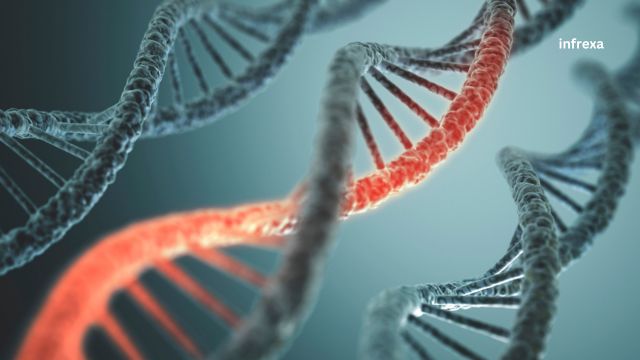DNA (Deoxyribonucleic acid) is the hereditary material in humans and almost all other organisms. It carries the genetic instructions that determine an organism’s characteristics and functions.
Importance of DNA Copying in Reproduction
The process of DNA replication is fundamental to life and the continuity of species. Here are key reasons why DNA copying is crucial:
- Genetic Variation and Evolution: DNA replication allows for genetic recombination, where genetic material from two parents combines to create offspring with unique genetic traits. This diversity drives evolution, helping species adapt to changing environments.
- Transmission of Genetic Information: DNA replication ensures the accurate transmission of genetic information from one generation to the next. Each new cell receives an exact copy of the parent cell’s DNA, preserving the genetic blueprint of the organism.
- Maintenance of Cellular Function: DNA contains instructions for protein synthesis, essential for cellular function. Accurate DNA replication ensures daughter cells inherit the complete set of genes necessary for proper protein synthesis.
- Prevention of Genetic Abnormalities: Errors or mutations during DNA replication can lead to genetic disorders. By faithfully copying DNA, the likelihood of errors is minimized, promoting the health and viability of offspring.
- Population Stability: Accurate DNA replication contributes to population stability by ensuring genetic information is passed on correctly, maintaining species integrity and preventing genetic drift or loss of diversity.
Who discovered DNA?
While many scientists contributed to our understanding of DNA, the discovery of its double helix structure is primarily attributed to James Watson and Francis Crick in 1953. They built upon crucial X-ray diffraction work by Rosalind Franklin and Maurice Wilkins.
Read also: Who discovered the cell?
Full Form, Structure, and Key Features
DNA stands for Deoxyribonucleic Acid.
Structure
- Double Helix: DNA exists as a double-stranded molecule twisted into a helix, resembling a spiral ladder.
- Backbone: The sides of the DNA “ladder” consist of alternating units of sugar (deoxyribose) and phosphate molecules. These form the structural backbone of the DNA molecule.
- Rungs: The rungs of the ladder are formed by pairs of nitrogenous bases held together by hydrogen bonds. There are four types of bases:
- Adenine (A) always pairs with Thymine (T)
- Guanine (G) always pairs with Cytosine (C)
- Base Pairing Rules: The specific pairing of A with T and G with C is known as complementary base pairing and is crucial for DNA replication and information storage.

Key Features
The order of these bases forms the genetic code that carries instructions for protein synthesis, cellular processes, and ultimately, an organism’s traits.
Related: डीएनए क्या है? यह कितने प्रकार का होता है?
Additional Points
- British scientist Dr. Alec Jeffreys developed the DNA fingerprinting technique, which is widely used in forensic science and paternity testing.
- DNA is considered the “chemical blueprint of life” as it contains the instructions that determine an organism’s unique characteristics.




